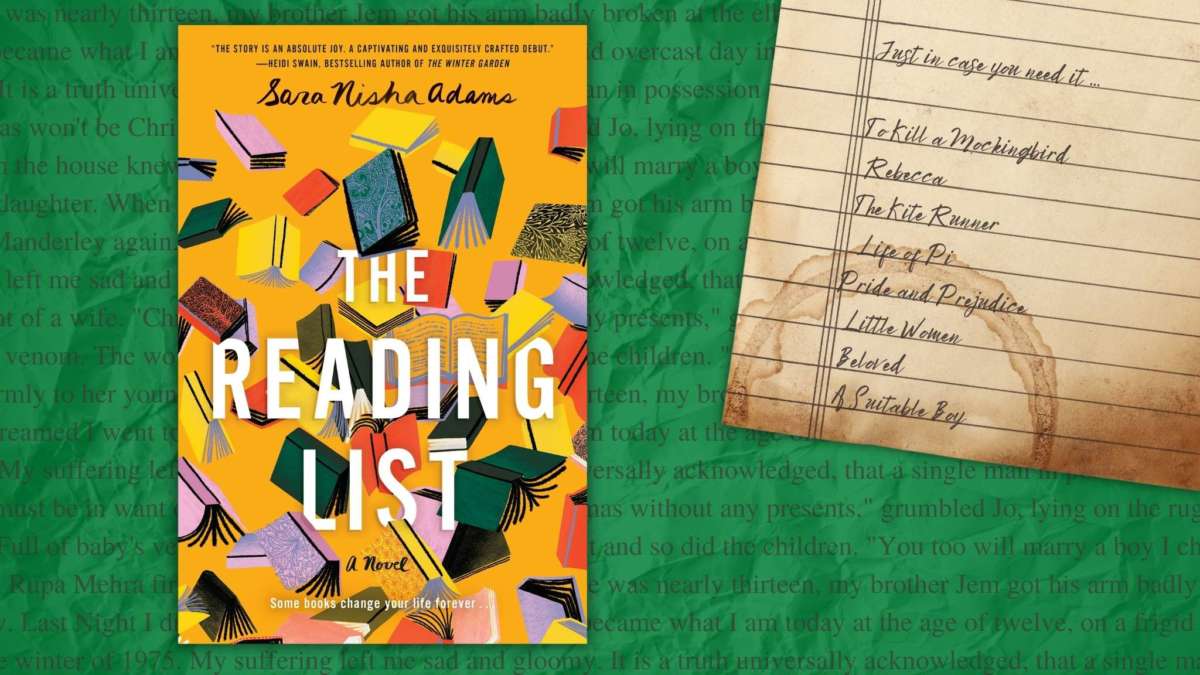The Reading List
“A quietly beautiful novel about the magic of books and the joy of human connection.” —Newsweek
—∞—
“A lovely story about how a love of reading can transport us to other worlds and also bring us together.” —Toronto Star
—∞—
Sara Nisha Adams’ debut The Reading List (William Morrow) is book therapy, a strong entry in fine, heartwarming fiction. It’s set in present-day Wembley, suburban West London, in a predominantly East Indian neighborhood with various small, family-owned businesses, a mandir (Hindu Temple) and the Harrow Road Library. A handwritten sign, “Save our Library,” is taped to the automatic doors — one of the few upgrades to this vulnerable community institution.
Funding cuts have reduced the number of staff placing a greater reliance on volunteers, decreased operating hours, and limited the amount of new inventory. Though this humble library is conveniently situated within the neighborhood, a longer bus ride goes directly to a large, busy, modern civic center library replete with full amenities; but it feels cold, impersonal and out of the comfort zone of most of the locals.
We are familiar with messages in bottles sent adrift, and at the heart of this exquisite tale, we find eight scraps of paper containing a personally curated list of novels, seemingly distributed at random by an unidentified book lover. These bits of flotsam — receipts, library slips, the reverse of a crossword puzzle pulled from the bottom of a purse — contain the same curious yet inviting missive, painstakingly and neatly written in flowing cursive script. “Just in case you need it” followed by the same set of titles: To Kill a Mockingbird, Rebecca, The Kite Runner, Life of Pi, Pride and Prejudice, Little Women, Beloved and A Suitable Boy.
Our chief protagonists — Mukesh Patel, a 70-something-year-old retired widower, and Aleisha, a 17-year-old seasonal library clerk about to embark on law studies at university — assemble at the Harrow Road Library. Mukesh remains in deep mourning after the death of Naina, his beloved wife of 50 years and an avid reader. Wanting to feel close to her and to connect with their granddaughter, he picks up The Time Traveler’s Wife, the last book she checked out from the library before her death. Aleisha, on the other hand, is not a reader. In fact, she’s rather sad and resentful of having to sacrifice her personal life to care for her chronically depressed mother. She doesn’t yet understand what a privilege it is to work at the Harrow Road Library.
After an initial uncomfortable encounter at the library where Aleisha was unspeakably rude to Mukesh, the two become unlikely friends. She shares the reading list found in a copy of To Kill a Mockingbird with him. As they work their way through the recommended books, the two converse about life and literature and form a supportive bond. Other library patrons and neighbors who have come across the handwritten reading lists also begin to read the novels in the order listed. Gradually, the library revives with a newly formed book discussion group, a Wednesday morning coffee hour, and the community bands together over a sudden tragedy. Books are therapeutic; that they have the power to heal is the hope and message conveyed through the reading list, and that family consists of more than those bound by blood ties.
Adams’ captivating debut is a must-read deserving of a place in the hands and hearts of book lovers and on library shelves. This exquisitely written, stimulating book is certain to be a favorite selection for book clubs. I wanted to read it again as soon as I finished it.
The Reading List is a valentine for the well-loved novels it names and evokes memories of a myriad of other personal favorites. It is authentic, optimistic and life-affirming, yet the author doesn’t shy from realistically including tough topics such as grief, depression and mental illness, loneliness, struggles of marginalized people and the sad reality of the impact that the closure of many underfunded, small public libraries can have on a community.
A neighborhood library is the heart of a community. Libraries are escape hatches, pleasure domes, and a passport for armchair travelers as well as a learning resource center for students and autodidacts. (The most stolen book according to the director of my local, well-funded, multi-branch library is a GED study guide.) The subtext of The Reading List is a tribute to the essential need for public libraries. This novel is a celebration of life, and Adams’ book therapy is imaginative and magical.
RELATED READS
Book club questions and discussion guide for The Reading List
Whose Story is This? Classic Tales Cleverly Retold
“In a Book Club Far Away” There Lives a Once-Beautiful Friendship




